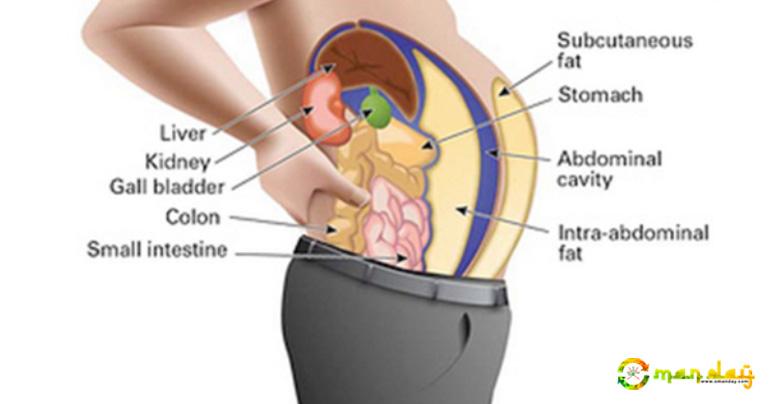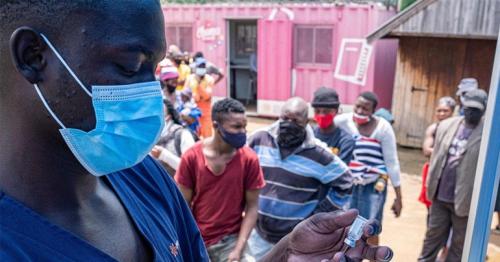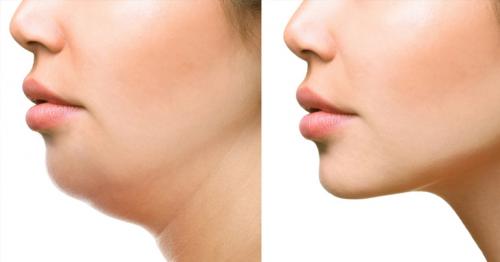Toxins Stored in Your Fat Cells are Making You Fat and Swollen. Here’s How To Cleanse Them
Unfortunately, we are all living in a toxic environment, being constantly exposed to chemical-laden foods. Therefore, toxicity is almost impossible to avoid, which means that our digestive system and liver can easily become overwhelmed. We are all designed to continuously and naturally remove toxins from the body.
Toxins can be divided into two categories: water-soluble and fat-soluble. Water-soluble toxins are easily flushed out of the body via the blood and kidneys. Fat Soluble Toxins are difficult to be removed and they can be completely removed only when they become water soluble. Some of these toxins are:
– Pesticides
– Heavy metals
-Preservatives
– Plastics
– Food additives
– Pollutants
– Various environmental compounds
The liver produces bile, a greenish-yellow fluid that is stored in the gallbladder. It is essential for digesting fats and for eliminating worn-out red blood cells and certain toxins from your body.
During digestion, the gut becomes selectively permeable so that the lymphatic system may pick up absorbed fats and carry them to the liver. Good fats then get turned into cholesterol, cell membranes, hormones, brain cells and skin cells.
Bad fats are processed and marked for elimination through bile, which is absorbed by insoluble fiber and exits the body as fecal matter or commonly known as poop.
This is the reason why eating diet high in dietary fiber is so important.
THE GUT ASSOCIATED LYMPHATIC TISSUE
The Gut Associated Lymphatic Tissue, or GALT, is the initial part of the lymphatic system which surrounds the digestive tract. This is where lacteals cause the absorption and processing of both toxic and dietary fats. It is essential for this part to have effectively working villi and lacteals. Then the lymphatic system takes the soaked up fats to the liver. The excellent fats are used by the liver for the production of:
– Cholesterol
– Hormonal agents
– Cell membranes
– Skin
– Brain cells
– As soon as processed, our liver will mark them for elimination.
In case of a blockage in the lymphatic system, there is a severe influence on the process of usage of great fats and removal of bad fats. There are numerous symptoms which suggest crowded GALT which is harming the lymphatic system:
– Bloating
– Swelling in breast; breast inflammation in menstrual cycle
– Skin irritation/itching
– Hypersensitive
– Removal problems
– Additional weight around the belly
– Tightness in the joints
– Swelling in hands/feet
– Irregular headaches
Stress and bad diet can affect our intestinal villi, which can impact the performance of our bowels. Extended constipation can make the digestive villi dry, which can lead to the production of reactive mucous.
When there’s excessive mucus, bloating can appear besides typical stools (1 to 3 normal bowel motions everyday). Moreover, more regular bowel motions may appear and the stools might look like diarrhea. In case you observe mucus in the stool, pay your medical professional a go to because it may indicate excess congestion in the villi.
When this happens, the delivery of great fats, excretion of toxic fats, the regular immune reaction, and the health of the intestinal skin cause obstruction of the process of disintegrating toxins. Typically, the neutralization of toxins taken in into the lymph is performed by immune-boosting white blood cells in over 500+ lymph nodes in the lymphatic system. When there is excessive mucous, the toxins are directed back to the liver.
To avoid this from occurring, there need to be a recognized balance of the mucus membranes. Some other aspects, such as: stress, processed food, coffee, soft beverages, food additives, and hyperacidity, may affect the intestinal villi.
Upkeep of proper health likewise needs a perfect circulation of bile from our liver. The bile helps in absorbing fats and has the capability to work as an efficient immune system responder within our digestion system.
Bile breaks down all toxic substances that can be damaging to the body. If your diet consists of large amounts of fiber, the large amount of bile will be eliminated through stool. However, if your diet plan does not have fiber, 94% of the bile will be reabsorbed by the liver for recycling. Toxic substances will also be consisted of in this procedure. In such a situation, the liver can end up being overwhelmed as it is not anticipating the return of these poisonous fat cells.
This can result with blockage in the liver over the long term. Additionally, our bile can become very thick and sludge-like. This makes it harder for the bile to break down fat-soluble contaminants due to the fact that it will not be able to fend off the acids from stomach that enter our little intestine. This will set off the mucous production, irritate the villi and cause congestion. As a repercussion, the whole gastrointestinal system will be impacted.
...[ Continue to next page ]
tag: blog , information
Share This Post






